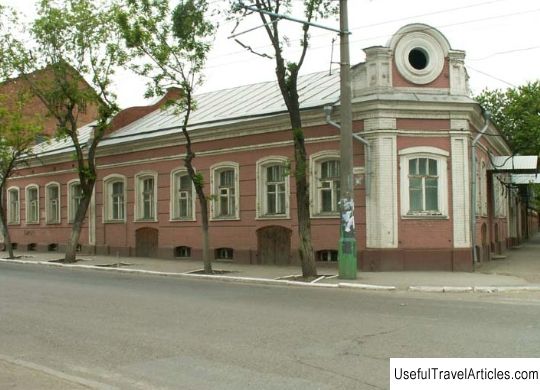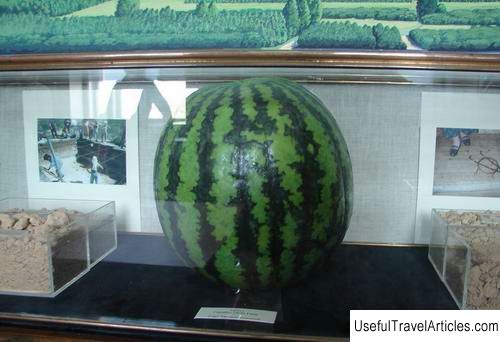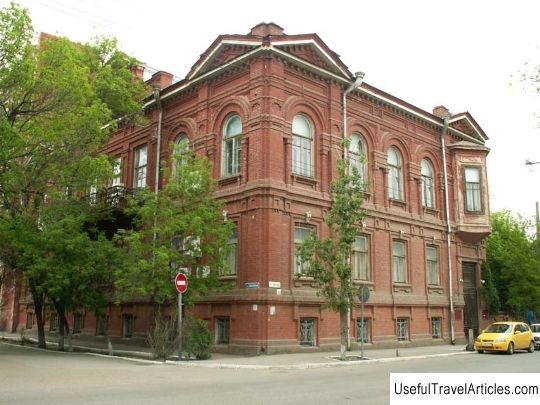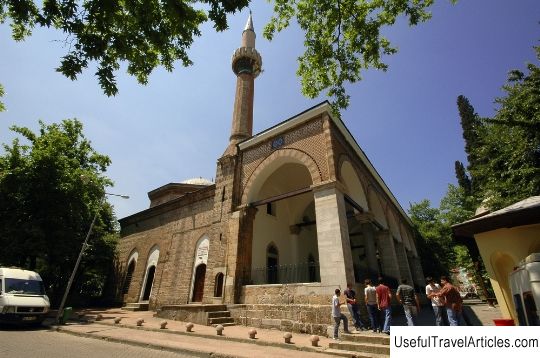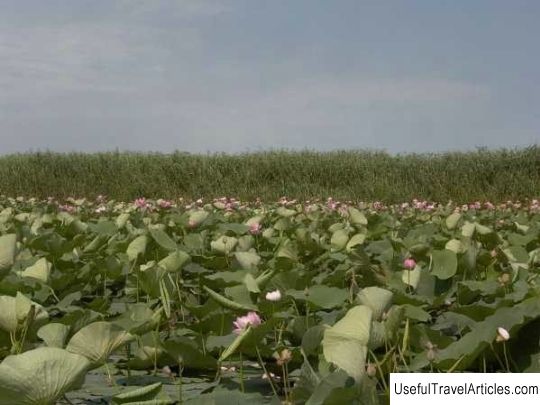Astrakhan Kremlin description and photo - Russia - South: Astrakhan
Rating: 7,6/10 (845 votes) 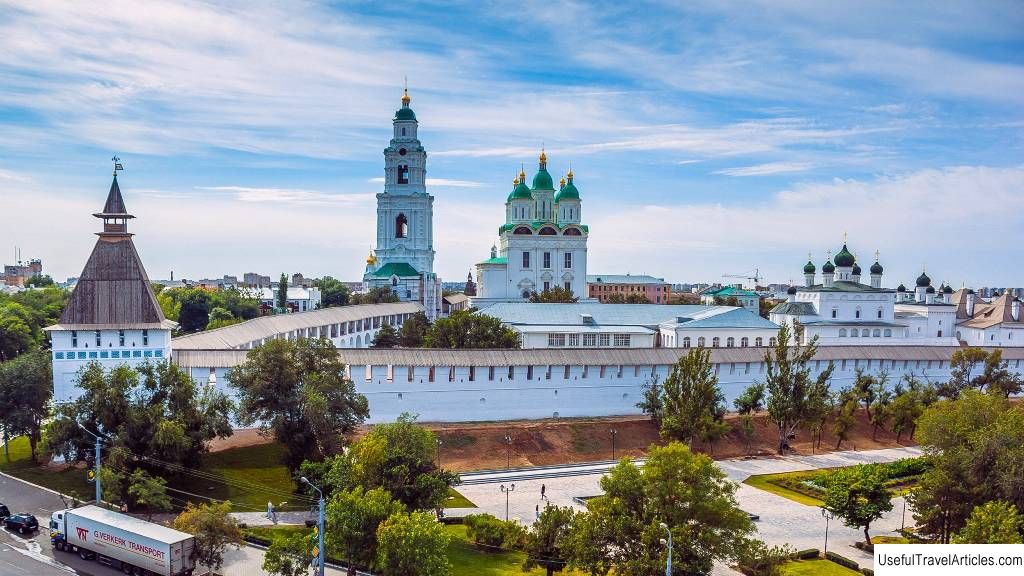
Astrakhan Kremlin description and photos - Russia - South: Astrakhan. Detailed information about the attraction. Description, photos and a map showing the nearest significant objects. Photo and descriptionThe Astrakhan Kremlin is one of the most powerful Russian fortresses of the 16th century. Here are preserved ancient walls and towers, inside there is a whole complex of church and secular buildings of the 16th-19th centuries and several museum exhibitions. Triangular fortressAstrakhan, or Hadji-Tarkhan, appeared in the XII century as the center of the Golden Horde. There was a crossroads of trade routes, so the city grew and richer rapidly. There were deposits of clay nearby - the first buildings and fortifications were made of bricks. In 1556 Astrakhan was taken by Russian troops. The old fortress was demolished and a new wooden prison was built. In 1580, the construction of a large stone Kremlin began. Astrakhan became one of the main southern outposts of the Moscow kingdom, stronghold for the fight against the Crimean Khanate. Its fortification was a matter of national importance, the best craftsmen were sent from Moscow to build fortifications. The fortress was built partly similar to the Moscow Kremlin: the same jagged end of the walls - "dovetails", the same tiered towers with platforms, on which, if necessary, it was possible to place guns. The tents of the towers were made of wood, with observation platforms arranged on them. The walls were three and a half meters thick. Now you can climb the walls - one of the sections is open for inspection. Three towers of the Astrakhan Kremlin - Artillery (Torture), Crimean and Red Gate - have preserved the original forms of the 16th century, and four more were rebuilt in the 17th-19th centuries. The main museum expositions are now located in the Artillery Tower and the Gunpowder Depot of the 16th century, which is almost adjacent to it. The three tiers of the Artillery Tower tell about the troubles and uprisings of the 17th-18th centuries, the work of the order chambers and, of course, about medieval punishment and torture. The fact is that during the uprising of Stepan Razin, executions took place in this tower: first, the participants in the uprising executed city officials, and then the rebels themselves were executed here. The interactive exposition of the Powder Warehouse is called "Secrets of the Astrakhan Kremlin". The entire Artillery Yard complex is now used for concerts, performances, festivals and other museum events. The tallest tower overlooking the Volga is the Red Gate. It has twelve faces seventeen cannon slots and fully equipped for all-round defense. Now on its three tiers there are expositions telling about the development of the Astrakhan Kremlin in the 16th-17th centuries, Astrakhan trade, and an exhibition of pre-revolutionary postcards with views of the old Astrakhan. In the southern Zhitnaya tower there is an exposition dedicated to medieval crafts. It hosts master classes in pottery and blacksmithing, and has a collection of items from the 18th-19th centuries. The fortress lost its strategic importance by the end of the 18th century, but it continued to house a large garrison. In 1807 a new guardhouse was built. Now it houses an exposition telling about the life of garrison soldiers and officers of the 19th century. In the 19th century, the building of the Zeichhaus was built. It retained its functions as a repository of weapons and ammunition until the middle of the 20th century. Before the war, there were machine-gun courses here, then the building was abandoned and was restored in 2007. At the very end of the 19th century, a two-story new barracks building was built. It was restored in 2010. Now it houses the College of Culture and Art, and part of the premises is occupied by the collection of the Ethnographic Museum. St. Nicholas Church and the Assumption Cathedral with a bell tower The regimental icon of the Russian troops who took Astrakhan was the icon of Nikola Mozhaisky, so the first church in the name of this saint was built in the very first wooden prison. In the stone Kremlin, it became a gateway. By the beginning of the 18th century, the dilapidated building was dismantled, and in 1728 a new one was built with the money of the merchant Afanasy Krasheninnikov. At one time the building was in charge of the Old Believer community, and then it became the church of the garrison hospital. During the 19th century, it was rebuilt several times, but during the Soviet restoration it was returned to its original appearance of the 18th century. In 2003, St. Nicholas Church again became active. The spiritual center of the fortress was built in 1698-1710. Assumption Cathedral. This is a five-domed two-story temple. Its altar apse has five ledges, and the Execution Ground is arranged at the front portal. The temple was brick and only part of the decor was carved from stone. The author of the project of the cathedral was the serf architect D. Myakishev. According to the original plan, the cathedral was supposed to have one dome, but in the process of construction it collapsed, and then the project was redone. On the second floor there was a summer church of the Assumption. The Lower Sretenskaya Church served as the burial vault for the Astrakhan bishops. The burial place of the Astrakhan Metropolitan Joseph, who was killed in 1617 during the uprising of Stepan Razin, is considered a shrine. It was canonized in 1918. The cathedral was closed after the revolution, the unique iconostasis was burned in 1931, and all valuables were plundered. There was an ammunition depot here. Only in 1992 the cathedral reopened. They tried to restore the interior according to photographs and descriptions close to the original. The bell tower of the Assumption Cathedral is the architectural dominant of the entire complex of Kremlin buildings. Once upon a time there was a passage tower at this place, which was first called Kabatskaya - because there was a tavern opposite, then Savior's - according to the gate icon, and then Prechistenskaya - according to the gateway church of the Mother of God. In 1710 the Kazan Church was converted into a belfry and not only bells were placed on it, but a tower clock. However, soon the bell tower cracked and was dismantled. A new bell tower in the classicist style was built in 1813. But it also turned out to be fragile: by the end of the 19th century, it began to tilt significantly, the Astrakhan people began to call it their Leaning Tower of Pisa. The current four-tier bell tower was built in 1910 according to the project of S. Karyagin. It is richly decorated in a pseudo-Russian style, and its height is 80 meters. In 1912, the latest electric striking clock appeared on it. They still work: they play music twice a day and beat every fifteen minutes. There is an observation deck on the bell tower - you can go up there with a guided tour and see the clockwork from the inside. Trinity Monastery Since 1568, a monastery arose in the Kremlin. A small wooden Trinity Church, 12 cells and outbuildings were built. A complex of buildings of the 17th-18th centuries has survived to our time: Trinity Cathedral and the adjacent Vvedenskaya Church with a refectory. By the 18th century, the monastery fell into decay, its buildings were used by the city administration. It housed a garrison school, a printing house and a hospital, and by the end of the 18th century most of the dilapidated buildings were demolished. The cathedral itself was restored at the expense of the local merchants on the initiative of the then Astrakhan Metropolitan Anastassy. By the end of the 19th century, it was once again rebuilt and insulated to serve as a winter church instead of the small and stuffy Sretenskaya church. Above the grave of the first abbot of the monastery, St. Cyril of Astrakhan, a chapel appeared in the 17th century. At first it was wooden, from the 18th century it became stone, and in the 19th century a classic empire portico with columns was added to it. Interesting factsThe Astrakhan fortress was built of stone, which remained on the ruins of old fortresses left over from the Golden Horde. Many episodes of the film "My friend Ivan Lapshin" 1984 were filmed in the Astrakhan Kremlin. Georgian princes Vakhtang are buried in the Assumption Cathedral VI and Teimuraz II.                                     We also recommend reading Gran Teatre del Liceu description and photos - Spain: Barcelona Topic: Astrakhan Kremlin description and photo - Russia - South: Astrakhan. |

